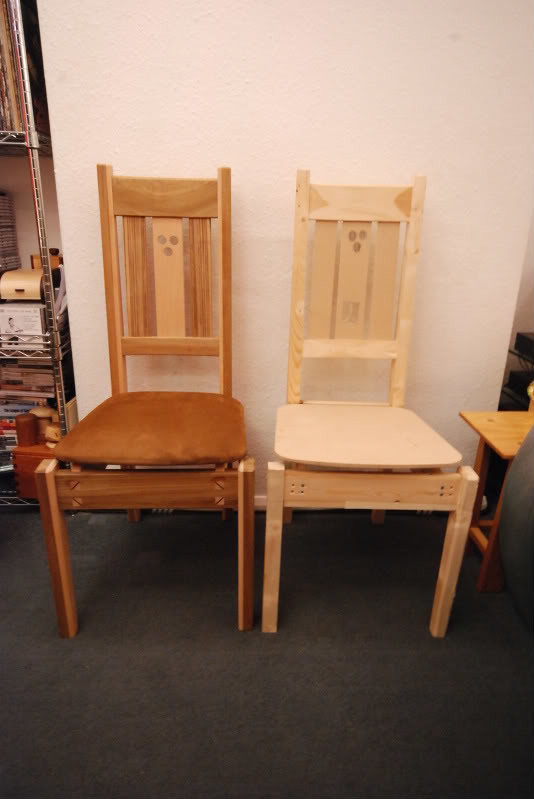Bodgers":2nbqjbcm said:
Best book I've found is Chairmaking and Design by Jeff Miller (ISBN 0 85442 155 6). Covers basic design issues and has a number of decent designs that can be copied or built upon depending on personal taste.
I have the 2nd edition of this, yeah great book. Jeff is the man when it comes to chairs.
As far as I know that's the
only book on jointed chair making!
It's a useful primer, however IMO it's ultimately disappointing. It goes only so far but then stops short of sharing the stuff you
really need to know. Jeff Miller clearly knows all the trade tricks, because some of his more complex designs incorporate them, but he doesn't explain any of these in this book. Consequently you're left with only simple and fairly rudimentary designs, the reader isn't given the methods and techniques necessary to tackle really interesting chair designs.
I'll give you some examples of what's
not in his book but is needed for successful chair making.
Firstly, take a look at this chair.
The back bars (the vertical splats in the back) need to be tenoned into both the crest rail and the rear seat rail. But how do you do that with professional, gap free joinery? You can't work from the plan or rod, if components are curved in two directions a two dimensional plan won't deliver the precise dimensions, and even if it's all in a single plane then by this stage in a chair build discrepancies will have inevitably crept in which means you have to work from the piece of furniture in front of you rather than from a plan. There are a whole suite of cabinet making techniques that are used to overcome this specific problem, but they're not covered in the Jeff Miller book.
Or take a second example, illustrated in this chair.
If you look at the side rail that joins the front and back legs there's a very slight "twist" as shown by the blue lines. It's only a few degrees, and if you weren't looking for it you'd never spot it, but it's a very common and important constructional element in many jointed chairs. Again, there are several established techniques to deal with this and the layout complexities that come with it, but you won't find them in the Jeff Miller book.
Finally, have a look at the corner blocks in this photo.
Like a lot of case furniture many chairs have corner blocks to add strength in critical areas. But unlike case furniture the corner blocks in chairs are not at 90 degrees, they may have compound angles or even curves, yet to achieve a good glue bond they need to be precisely scribed to mate against other components. Chair making has evolved loads of tricks and techniques to achieve this, but there's no mention of them in the Jeff Miller book.
I could go on, but you get the picture. The Jeff Miller book is okay as a very basic introduction to non-windsor chair making, but it really needs a second volume to take things to the next level. Unfortunately as far as I know there's no book out there that shares this information. There is a half way house in that a Canadian woodworker (I forget his name, I think it's Michael something?) has published the techniques for making jointed chairs that simplify things considerably by separating the seat from the chair sub-structure, that's well worth exploring if you're interested in chair making, but I don't believe that the really critical details for making full-fat versions of jointed chairs are either on the web or in print. Little hints and allusions here or there, but no single source that guides you through the entire process.





































